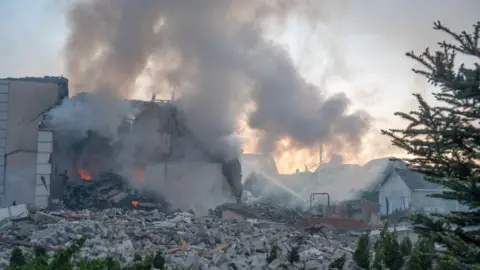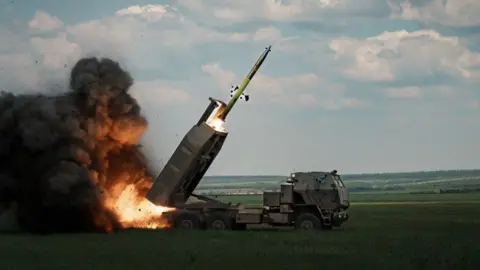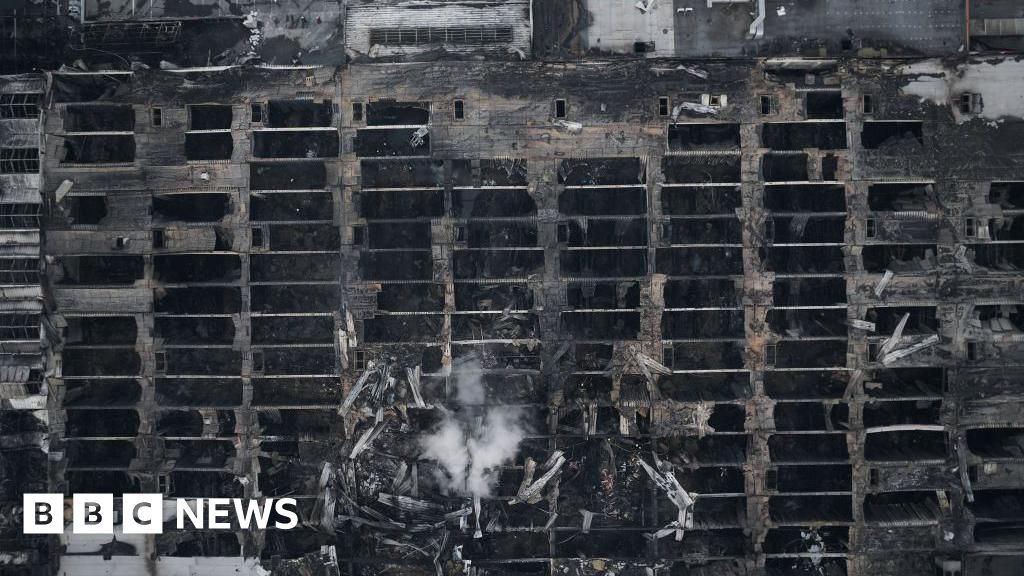Abduljalil Abdulrasulov,bbc news
 Getty Images
Getty ImagesUkraine can now use Western weapons to strike targets in Russia. What will this decision change?
Western countries have so far restricted the use of weapons against military targets in Ukraine, including Crimea and the occupied territories. They fear that using weapons provided by NATO countries to attack targets on internationally recognized borders will escalate the conflict.
But Russia’s latest advances in the northeastern region of Kharkiv have convinced Kiev’s allies that to defend itself, Ukraine must also be able to destroy military targets on the other side of the border.
Last month, Russia launched a massive ground offensive in the region, opening a new front and seizing several villages. Russia’s advance poses a serious threat to Kharkiv, Ukraine’s second largest city, which is only 30 kilometers from the border.
The region’s borders are also effectively frontlines, so a ban on the use of Western weapons against targets outside Ukraine allows Russian forces to prepare for the operation in a secure environment.
After mounting pressure from Ukraine and other European countries, the United States agreed to change its policy and allow Kiev to attack Russia with Western weapons.
“The hallmark of our engagement is adjusting and adapting as needed to meet what’s actually happening on the battlefield and ensuring that Ukraine gets what it needs, when it needs it,” U.S. Secretary of State Antony Blinken told a meeting with NATO foreign ministers on Monday. Five meetings were held in Prague.
 Getty Images
Getty ImagesThe announcement comes just days after Russian President Vladimir Putin threatened to expand “sanitary zones” to prevent Western long-range weapons from attacking Russian territory.
European NATO countries must remember that they have “small territories and densely populated countries,” he said.
“They must take this factor into account before discussing attacks deep into Russian territory,” he added.
Avoiding escalation may be the reason why the United States has not included long-range weapons such as ATACMS (Army Tactical Missile System) in its license to attack Russia. These missiles have a range of 300 kilometers and can be used to strike military bases and airports deep within Russia.
These restrictions leave Ukraine with the option of focusing on targets near its borders. But it is still a significant policy shift for Kyiv’s main ally.
Even with a short range (up to 70 kilometers), multiple rocket launchers such as HIMARS can severely disrupt Russian logistics operations and troop movements, ultimately slowing down any offensive plans.
Yuri Povkh of the Kharkiv tactical group, which coordinates military operations in the northeast, said Ukraine can now “strike where the enemy concentrates troops, equipment and supply storage facilities for use in attacks on Ukraine.”
Earlier this week, Ukrainian President Zelensky said Russia was massing troops just 90 kilometers away from Kharkiv in preparation for another attack.
The Institute for War Research analyzed satellite images and confirmed “an expanded activity in warehouses and depots” in the area. Therefore, the ability to target these facilities will significantly enhance the Ukrainian military’s ability to repel new attacks in the region.
However, lifting the ban on Western weapons is unlikely to help protect Ukraine from Russian glide bombs known locally as “KABs.” They had devastating effect and were often used to bomb Kharkov and other border towns. But to thwart such an attack, Ukrainian forces must target aircraft that drop deadly KABs.
 Getty Images
Getty ImagesThe only weapon Ukraine currently possesses that can intercept these aircraft is the US Patriot air defense system. However, bringing such weapons close to Kharkov is a huge risk. Spy drones could quickly detect it, and Moscow could launch missiles such as Iskander to destroy the expensive system.
Interestingly, the UK and France, which supplied Ukraine with the jointly manufactured Storm Shadow air-launched cruise missile (called the Scalp in France), did not explicitly restrict its use. They have a range of up to 250 kilometers. In fact, French President Emmanuel Macron told reporters last week: “We should allow [Ukraine] Destroying military sites from which missiles were launched is essentially attacking military sites in Ukraine.
An unnamed military aviation officer told the BBC that such comments were seen as permission to use storm shadows/scalps. As a result, Ukraine can now attack airports in the Kursk and Belgorod regions that border Ukraine, he said.
However, there will be limits to what such actions can achieve. Ukrainian Su-24s equipped with these cruise missiles must be launched close to the Russian border, making them vulnerable to Russian air defense systems. The F-16 jet, expected to be launched later this year, will be better able to perform such missions. But President Zelensky acknowledged that it was unclear whether Ukraine’s partners would allow the jets to be used against Russian targets.
“I think the use of any weapons on Russian soil, whether Western-type weapons, is a matter of time,” he told a Nordic summit in Stockholm on Friday.
The Ukrainian military is trying to develop its own weapons to hit targets behind Russia’s rear. Some of their drones have struck oil depots and military installations hundreds of kilometers from the border.
The latest attack was against a long-range radar station in the city of Orsk, 1,800 kilometers from the Ukrainian border.


